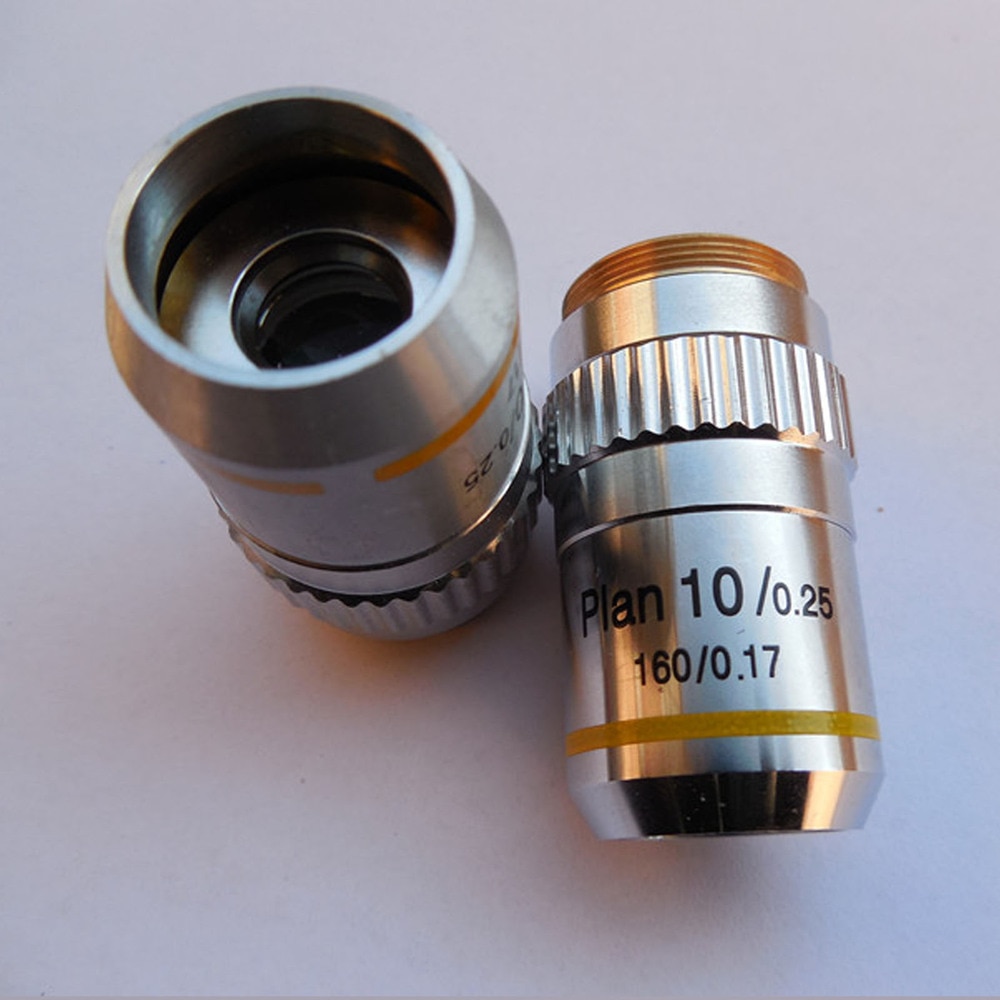Lenses Microscope. The two main types of lenses found in light microscopes today are called the objective lens and the ocular (or eyepiece lens). There are two types of lenses that are used in the compound microscope:

 40X2500X LED Digital Binocular Compound Microscope w 3D from amscope.co.uk
40X2500X LED Digital Binocular Compound Microscope w 3D from amscope.co.uk
Simple microscope comprises of single biconvex lens used as a magnifying glass. The optical microscope forms an image of a specimen placed on the stage by. A typical microscope has three or four objective lenses with different magnifications. screwed into a circular “nosepiece” which may be rotated to select the required lens.
 aliexpress.com
aliexpress.com
The eyepiece is also known as the ocular lens. In microscopy. the objective lenses are the optical elements closest to the specimen.
Source: omaxmicroscope.com
The objective lens gathers light from the specimen. which is focused to produce the real image that is seen on the ocular lens. How do the lenses in a microscope work?
ebay.com
A microscope uses lenses whose strength is predetermined. in that. the strength of a lens is directly related to the focal length i.e short focal length magnifies objects more than lenses with a long focal length. In fact. the objective lens has within it. several compounding lenses that contribute to higher and higher magnification powers.
 aliexpress.com
aliexpress.com
C omp ou n d l i gh t m i c r os c op e : A magnified image of the object is obtained by the objective lens.
banggood.com
C o m pound de a l s w i t h t he m i c ros c ope ha vi ng m ore t ha n one l e ns. The term lens is the common name given to a component of glass or transparent plastic material. usually circular in diameter. which has two primary surfaces that are ground and polished in a specific manner designed to produce either a convergence or divergence of light passing through the material.
 Source: amscope.co.uk
Source: amscope.co.uk
The eyepiece allows the image to be viewed. Microscope objectives or objective lenses are in many ways the heart of the microscope. and are typically mounted on a rotating nosepiece or turret to enable easy selection.
Natural Light Is The Source To See The Object.
The examples of this kind of instrument include the hand lens and reading lens. What is the purpose of the lenses on a microscope? In fact. the objective lens has within it. several compounding lenses that contribute to higher and higher magnification powers.
A Simple Microscope Is A Magnifying Glass That Has A Double Convex Lens With A Short Focal Length.
An illuminator is a source to see the object. The optical microscope forms an image of a specimen placed on the stage by. A magnified image of the object is obtained by the objective lens.
The Objective Lens Gathers Light From The Specimen. Which Is Focused To Produce The Real Image That Is Seen On The Ocular Lens.
A c om pound l i ght m i c ros c ope us e s l i ght t o t ra ns m i t a n i m a ge t o your e ye. The observation magnification is the product of the magnifications of each of the lenses. In microscopy. the objective lenses are the optical elements closest to the specimen.
It Is Through The Microscope’s Lenses That The Image Of An Object Can Be Magnified And Observed In Detail.
The two main types of lenses found in light microscopes today are called the objective lens and the ocular (or eyepiece lens). Modern compound microscopes contain an eyepiece. an objective. and a condenser lens and together these lenses work to refract the light that enters our eye and serves to enlarge the specimen under inspection. These lenses are often color coded for easier use.
A Compound Light Microscope Often Contains Four Objective Lenses:
When light reflects off of an object. Microscope objectives or objective lenses are in many ways the heart of the microscope. and are typically mounted on a rotating nosepiece or turret to enable easy selection. The compound microscope has two systems of lenses for greater magnification. 1) the ocular. or eyepiece lens that one looks into and 2) the objective lens. or the lens closest to the object.